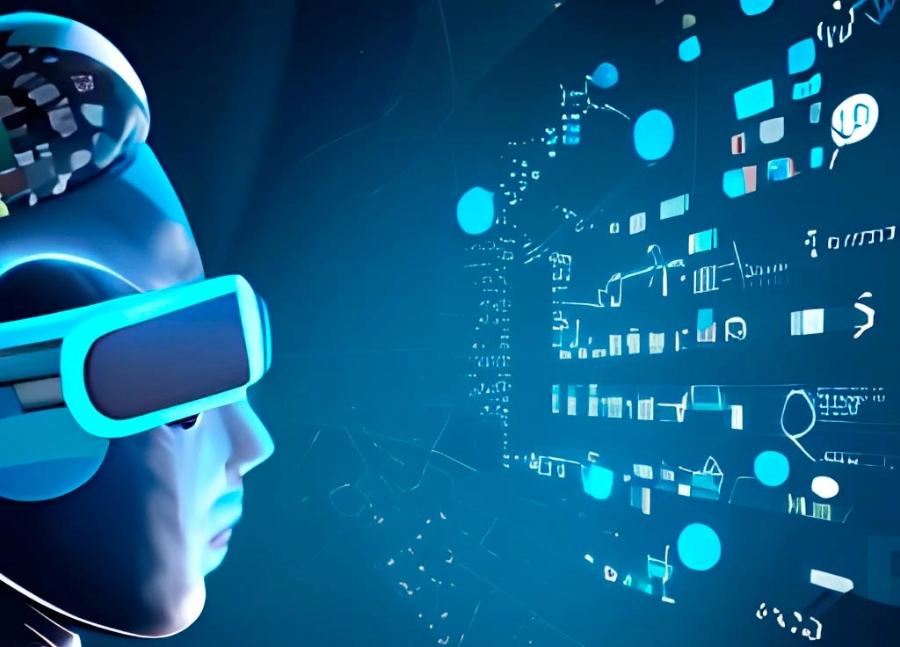Generative AI in Metaverse
Artificial intelligence (AI) has the ability to bring out significant progress in the metaverse universe through intelligent decision-making and personalized user experiences. Users may perform financial transactions online with more privacy and security because of Web3’s decentralized network design. Additionally, the security and integrity of data are ensured by the immutable information management and transfer protocols made available by blockchain technology.
Innovative AI tools like ChatGPT have the potential to be crucial productivity tools in the Web3 era, solving issues with the creation of digital assets and content while bridging crucial gaps in Web3 development. These generative AI technologies should speed the emergence of the Web3 era by giving Web3 producers and contributors more dependable and practical productivity options. Due to their exceptional originality and adaptability, generative AI technologies like ChatGPT have attracted a lot of attention in the market. These tools might greatly improve the effectiveness and caliber of content production and delivery. ChatGPT, which is built on deep learning models, has the capacity to produce content in multiple scenarios.
Being able to use multi-modal AI approaches allows ChatGPT to evaluate, interpret, and create information with a high level of granularity by utilizing several perceptual modes. Real-time perception and response to the material are made possible by this feature, providing adaptable feedback systems. Thus, more varied and richer types of material are produced as a result. The process of creating content also incorporates technologies like picture generation, speech synthesis, and the creation of virtual characters.
AI for Generative Content (AIGC)
A new age has begun as a result of advancements in AI for Generative Content (AIGC), with crucial technologies like ChatGPT becoming crucial elements of the metaverse engine layer. The creation of top-notch material for the metaverse has been greatly simplified by this connection. Generative AI has the ability to renew sectors like virtual reality (VR) and augmented reality (AR) by increasing the volume of material in the metaverse to previously unheard-of heights. In the AIGC age, it is crucial for all platforms involved in developing or constructing metaverse spaces to ascertain whether utilizing AI can first enhance the content, attracting people even in the absence of a user base that has already been formed.
The amount of information available in the metaverse now falls short of user expectations, and creating settings for the metaverse is still very expensive and only accessible to a small number of businesses. Furthermore, the vibrancy, accessibility, and elegance that consumers demand are frequently missing from virtual worlds developed via significant investments. By using AI to remove obstacles, there is the possibility for a significant decrease in the cost of building metaverse settings.
Applications in Metaverse
Building designers now have a strong tool for quickly creating elaborate and complex building structures thanks to the use of generative AI technology in the production of metaverse buildings, which improves the effectiveness of the building design process. With the use of this technology, architects may create complex buildings with a variety of external designs, such as arches, circles, triangles, quadrilaterals, and more. Additionally, generative AI extends its support to the construction of complex interior spaces, including interior furnishings, plans, and finishes, easing the architectural design process. This technique is important not just for designing buildings but also for making elaborate wall decorations like tapestries, sculptures, and paintings. Additionally, generative AI helps architects create complex functional elements by addressing important factors like corrosion resistance, durability, sound insulation, and resistance to wind, water, cold, and dampness.
Additionally, generative AI has the potential to hasten the creation of complex energy-efficient features for metaverse structures. These attributes cover a broad range of sustainability criteria, such as groundwater efficiency, solar energy pool efficiency, wind energy efficiency, and geothermal energy efficiency. By utilizing generative AI, designers, and contractors can quickly include these eco-friendly components in their plans, helping to produce energy- and environmentally-conscious metaverse constructions.
Role of Natural Language Processing(NLP)
For generative AI, Natural Language Processing (NLP) serves as the building block. The study of human language, or NLP, enables generative AI systems to understand and interact with human language data, making it easier to produce a variety of material with linguistic roots. Additionally, image processing, which entails the study of image data to gain fresh insights and produce a wide range of material from various image collections is a fundamental cornerstone for generative AI. Computer vision is the study of how to analyze picture data to learn new things and produce a variety of content from different image datasets.
Source
- https://www.weforum.org/agenda/2023/05/generative-ai-and-how-can-it-shape-the-metaverse-industry-experts-explain/
- https://www.bitsathy.ac.in/generative-ai/
- https://www.bitsathy.ac.in/unleashing-creativity-the-power-of-generative-ai/

